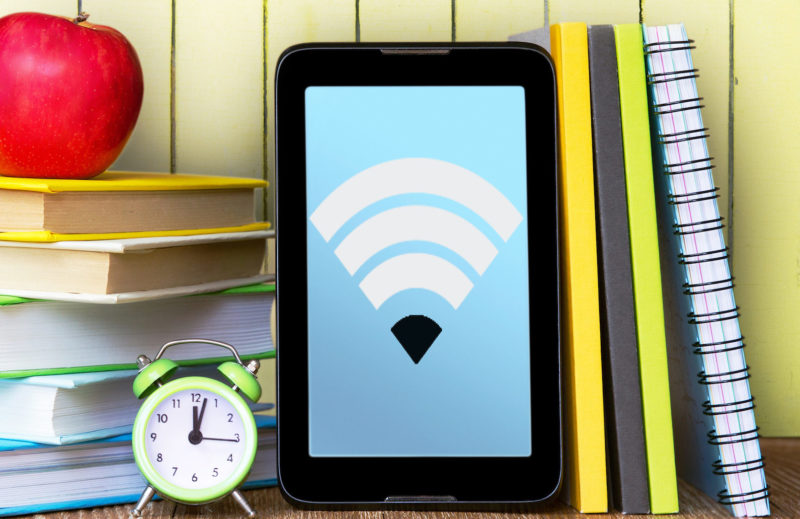An April brief from Pew Charitable Trusts, “Broadband Challenges and Opportunities in Affordable Rental Housing,” shares insights from experts and internet service providers (ISPs) about the lack of adequate internet connections in federally subsidized multifamily housing and progress toward connecting these buildings affordably.
“Many residents do not have access to any internet connection, let alone a high-speed connection that can facilitate contemporary online activities, such as telework,” according to the brief.
Further, many residents of federally subsidized multifamily housing, also called affordable rental housing, who do have broadband connections struggle to afford the monthly subscription cost. Still others often lack the devices and digital skills needed to connect to the internet and succeed in the digital age.”
The most recent federal data available found that about one-third of surveyed households living in public housing had high-speed internet. Reasons for this low connectivity level included a lack of wiring for broadband in older buildings, outdated networks that have not been upgraded, and low-quality or unaffordable service. While improvements have surely been made since 2016, new data has not yet been released.
Poor broadband access is related to historic redlining practices in which the federal government assessed neighborhoods and rated them on their “risk” of insuring mortgages. In large swaths, predominantly African American neighborhoods were labeled as high risk and colored in red on maps of every city in the country. Federally subsidized housing now abounds in many of these redlined communities.
“Because internet deployment in the U.S. follows a private-sector model in which ISPs invest in new and upgraded infrastructure based on the estimated returns, those investments typically flow into wealthier neighborhoods, and areas lacking in affordable, reliable broadband often overlap with historically redlined neighborhoods. As one study noted, ‘There remain neighborhood-based differences in in-home broadband access correlated with past racist and classist housing practices,’” according to researchers.
ISPs do not see a profitable return on investment in these low-income communities.
In addition, more than half of federally subsidized housing structures (51 percent) were built before 1975, predating broadband, and have outdated wiring that would not meet modern standards.
Other barriers
Lack of affordable internet options, lack of devices and a dearth of digital skills can also keep residents of federally subsidized housing from experiencing digital equity. In 2021, 43 percent of adults with annual household incomes under $30,000 did not have a home broadband subscription, compared with just 8 percent of those with incomes of more than $75,000 a year. In interviews, 45 percent of people without home broadband said the service costs too much and 37 percent said they could not afford a device.
Both Pew research and that from the National Telecommunications and Information Administration (NTIA), along with other studies, found that subsidized housing residents said they can afford no more than $10 a month on internet.
In addition to affordability, researchers noted that residents of federally subsidized housing are more likely to be over 65, people with disabilities or people with limited English proficiency — groups researchers said have a heightened need for digital skills training.
However, the Center on Budget and Policy Priorities found in 2020 that more than one-third of all U.S. residents in public housing are children under age 18.
Assistance programs
While many programs have been created to ease the financial burden associated with broadband access in low-income communities, Pew researchers cite the need for better collaboration among them.
- ConnectHomeUSA – Facilitates partnerships among ISPs, philanthropic and other partners, and public housing agencies to provide low-cost internet, devices and digital literacy training to HUD-assisted households and, as of January 2023, has reached more than 100 communities throughout the country.
- Housing funds – The U.S. Department of Housing and Urban Development issued guidance allowing Coronavirus Aid, Relief, and Economic Security (CARES) Act funds to support in-unit broadband access for residents. “But despite the historic amount of federal money available, interviewees emphasized that funding remains limited, and broadband expansion is competing with basic maintenance for resources in many communities within the HUD portfolio,” the brief states.
- Broadband Equity, Access, and Deployment(BEAD) Program – More than $42 billion is available in the BEAD Program to support planning, network deployment and adoption efforts. NTIA administers the program and will allocate funding of at least $100 million to each state and $25 million each to territories. The remaining funds will be allocated to states and territories based on their share of the nation’s unserved locations. BEAD includes several provisions that can support internet service for federally subsidized properties.
- Affordable Connectivity Program (ACP) – The Federal Communications Commission administers the $14 billion ACP, which provides up to $30 monthly ($75 on Tribal lands) to low-income households for use toward the monthly cost of a broadband connection. The program also includes funding to eligible governmental and nongovernmental entities for outreach grants to help raise awareness of, and connect eligible households to, program benefits.
“Meeting this challenge will require a continued commitment from leaders at all levels of government; early and ongoing engagement with residents, property owners, and other stakeholders; and sustained funding sufficient to provide low-income households with the affordable connections, devices, and skills they need to enjoy the full benefits of broadband,” concludes the brief.





